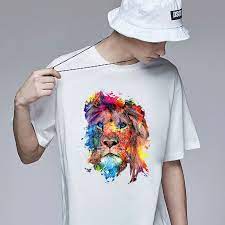
DTF Transfer Printing: The Future of Custom Apparel Manufacturing
In today’s constantly growing world of fashion, tendencies come and go within a matter of several weeks or even time. For those who want to stay ahead of the bend, the following large thing in custom apparel generating is Dtf transfers. DTF, or “Straight to Motion picture,” transfers will be the newest advancement in attire stamping, offering unrivaled shade vibrancy, sturdiness, and overall flexibility in publishing onto a variety of textiles. In this blog post, we’ll consider a closer look at how Dtf transfers work, their positive aspects and restrictions, and why these are speedily becoming popular from the custom apparel market.
custom dtf transfers use a higher-high quality film since the main medium sized for generating patterns onto clothing. The motion picture is imprinted using a specialized printing device using a higher denseness, yellowish pigment ink that could produce vivid and multicolored styles. As soon as printed out, the video is placed on the garment, and a hot push is used to shift the ink cartridge through the video towards the material. The very last end result is a smooth, higher-high quality print that may be incredibly tough and extended-long lasting.
Dtf transfers supply several positive aspects over conventional generating strategies, such as screen printing or DTG (Immediate to Garment) printing. First, Dtf transfers are generally far more adaptable in their fabric compatibility. They are able to print on everything from 100 % cotton, polyester, and even nylon material, so that it can make it more versatile for those who wish to try out a number of materials. Furthermore, Dtf transfers give you a wider range of colors, due to the inkjet printer’s extensive color gamut. The standard is counterpart or superior to most other stamping methods accessible, which makes it a great choice for those stamping in big amounts or even for those seeking intricate designs using a higher level of detail.
However, it’s important to note that Dtf transfers have some constraints. Although Dtf transfers are great for publishing on various materials, there are still some textiles to take into consideration. Fabrics using a rough surface area, including corduroy or burlap, may well not produce and also easy textiles. In addition, stamping on gentle fabrics can sometimes weakened or fade the colours, so it’s better to printing on darkish hues or vibrant colors. It could be a tad high-priced when getting the supplies, equipment, and ink alone for an individual just commencing.
In a nutshell:
Dtf transfers really are a activity-changer within the custom apparel generating market. The mix of an computer printer and specialised printer ink technologies provides for speedier turnaround occasions, and the opportunity to printing highly thorough, multicolor models onto both gentle and dark materials. These transfers’ toughness and adaptability get them to the favorite generating method preferred by numerous laser printers, makers, and business people.
Regardless of whether you’re planning to make your individual customized clothes or start up a productive line of clothing, DTF shift is definitely the strategy that you need to consider. Even though it demands a bit of a preliminary purchase, Dtf transfers really are a inexpensive, great-good quality publishing method which takes your clothes publishing game to the next level. Featuring its colour vibrancy, flexibility, and durability, Dtf transfers are here to keep and get end up being the after that big thing in custom apparel publishing. So what are you currently waiting around for? Give DTF generating a go and improve your trend game!